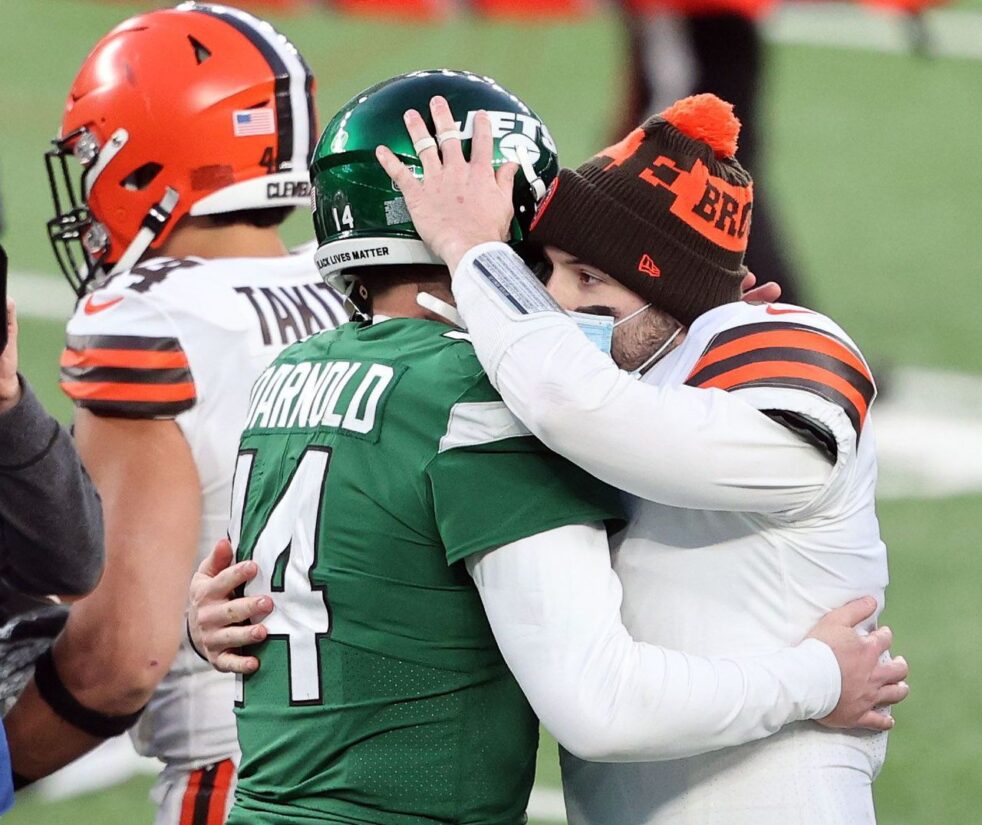Each year, quarterbacks continue to defy father time and play at a high level despite their age. Tom Brady has been the epitome of longevity as he continues to lead the league in many of the top statistical categories and shows no signs of slowing down even as he approaches his age 45 season. Aaron Rodgers is deep into his 30s, but he is coming off back-to-back MVP seasons. This trend does not just end with current players. Recent retirees also demonstrated this key aspect. Drew Brees continued to be one of the league’s top quarterbacks even into his final season. While Ben Roethlisberger may not have been the same quarterback he once was, he was able to lead the offense to play at a level complimenting the elite defense. There are a variety of reasons that this factor has become so prominent over recent years.
One of the main reasons players have been able to increase their playing time has been the advancement of science. Nowadays, more players have established extensive regimens to take care of their bodies. Brady’s “TB 12 method” combines specific diets and recovery routines to help him continue to perform at a high level. Russell Wilson spends a million dollars annually on recovery. Modern advancements continue to find new ways to help athletes be able to compete longer than quarterbacks of previous eras.
An additional aspect that science has impacted is injuries, and in football one of the most common injuries is a concussion. More awareness around concussions has helped all players, coaches and other personnel be able to identify the signs sooner and are quicker to pull players out of harm’s way. Concussions and other injuries that are correctly diagnosed can help save players’ careers.
Another reason for this new trend is the evolution of the game. In recent years, the NFL’s rules have evolved to a more offensive-friendly league. Roughing the passer penalties has changed to be more protective of the quarterback and save them from excessive hits.
While the growth and increased careers for quarterbacks has seen several benefits, there have also been notable consequences from this. This has created a surplus of starting-level quarterbacks in the league and teams are quicker to move on from their situation.
A prime example of this comes from Baker Mayfield and the Browns. The high volume of quarterbacks gave the organization a stronger urge to find other options at the quarterback position. Mayfield has proven to be a strong talent in this league. In his rookie year, he nearly led a team that had combined to win one out of its previous 32 games to the playoffs. He also led Cleveland to their first playoff appearance in 18 seasons and first playoff win since 1994. While many look at the inability to play at the same level as his playoff season, Mayfield continued to play through a shoulder injury hindering his abilities. This past offseason, the organization decided they wanted to find alternatives at the position. Some believe that if Mayfield or his new backup, Sam Darnold, do not prove themselves this year, they may lose their relevance in the league and could be afterthoughts.
Another example of a situation that has suffered from the greater quantity of strong reliable quarterbacks playing for long periods is with Jimmy Garoppolo and the 49ers. Since Garoppolo arrived in San Francisco, he has had one of the highest winning percentages of any quarterback in the league.
He has continued to help the team make deep runs in the playoffs. Two years ago, the 49ers decided to give up several assets to move up in the draft and select Garoppolo’s successor, Trey Lance and move on from the veteran. However, while San Francisco looks to make the transition to Trey Lance, teams have been reluctant to trade for him.
Both quarterbacks are strong starting quarterbacks, but with players like Brady and Rodgers, more teams are giving less time for their quarterbacks to prove themselves and are quick to go into different directions, whether that is through the draft or making large franchise altering trades.
Each year, the seasoned veterans continue to hold their reputation as the league’s best and see new rookies with exceptional talent looking to become the next star quarterback.
With this continuous rotation, the league’s middle-of-the-pack quarterbacks have fewer strikes than quarterbacks in past generations.
